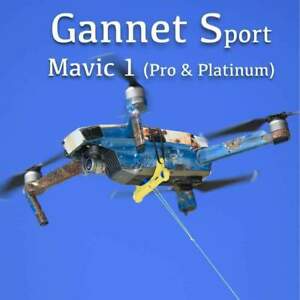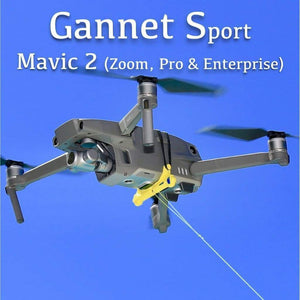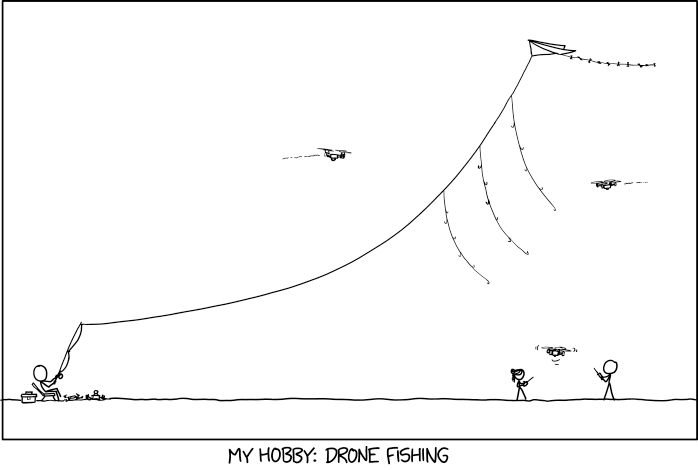
A drone can help you fisherman who has always dreamed of landing the big catch. Drones are a great way to survey a particular area. Some drones even come with a Cable Cam feature, which allows you to fly your drone as if it were a cable. A cable camera feature is extremely useful when you're looking for fishing spots. You can fold the drone and store it easily in your fishing bag when not in use.
Fisherman FD1
You want a drone that is good for fishing but not great for you. If you are interested in a Fisherman FD1 Drone Fishing Kit, The drone has features that will improve your fishing experience. These include an altimeter pod and elevated GPS pod to ensure precise positioning and control. The GPS/altimeter will reduce interference from surrounding environments. You won't accidentally reset the drone by setting its compass to point north. With a push-button remote, you can set the camera for color HD realtime viewing. Remote control range extends up to 1600m. A new remote control lets you operate the Fisherman FD1 drone over longer distances.
The SwellPro Fischerman waterproof drone is equipped with a HD camera, FPV goggles and a waterproof propeller. It can hold a 2kg bait, and can also drop a 2-kg bait in the water. It has an internal waterproofing system and a flight time of up to 30 seconds. You can buy an additional camera or FPV goggles to increase the drone's durability.
Cuta-Copter Ex-1
Cuta-Copter Ex-1, a drone that you can fly yourself, is a great option. The drone can be used to take amazing photos and videos from far away. It has a range from 3.5 to 5 miles, and a battery lifetime of five hours. It can fly for 30 minutes at maximum, giving you plenty of time to cast your lure and use the return-to-home feature. It is also very stable while hovering so that you don't have to worry if the drone falls over while casting.

Cuta-Copter EX-1 Flying Fishing Drone is water-resistant and floats on the surface of water. The Ex-1 drone has the ability to carry three kilograms (or more) of bait. While the drone doesn't come with a charging cable or a battery, you can still use the Cuta-Copter application to control your drone remotely while fishing. This allows you to have both the best and worst of both worlds. You'll enjoy an unforgettable experience when you master the art of fishing using your Cuta-Copter ex-1 drone.
Upair
Compared to other drone fishing kits, the Upair is an easy-to-use, easy-to-modify device that can be used to capture stunning footage. It can fly up to 0.5km and takes 20 minutes. The high-resolution camera can be used with the controller, which has a seven inch LCD screen. Upair's GPS- and FPV-monitor transmission ensure that you get the best view of any lake where you fish. The drone can be programmed with a destination address, and can return to home automatically when the signal is lost.
The Upair drone fishing kit comes with a downrigger attachment that can be easily attached to the landing gear of your remote-controlled fishing machine. This feature will allow you to concentrate on fishing and reduce your fishing effort. The downrigger can also be attached to your fishing line and bait. Once connected, the drone will fly in mid-air and drop it at the place you choose. To drop your bait, you can attach the drone to your fishing vessel!
Cosee unmanned aircraft system
The Cosee unmanned aircraft system (UAS) drone fishing kit has a few unique features that make it an exciting new tool for fishing. It can be used to cast your fishing line at an altitude greater than 98 feet. You can also see what you're doing. It comes with a fish finder, camera, and microphone built in. This will allow you to record your fishing experience. This technology is great for surfing fishing. You can drop your bait far from the boat but still have deep enough water to catch the fish.

It is essential that you are familiar with the regulations and rules of flying your drone in water to fully take advantage of this technology. If you are fishing, it is best to keep your drone about 40-60ft away from your boat. Keep the drone in a steady, consistent speed so you don't bump into buildings or people. You can also use this drone to capture other fishermen fishing trips, or to share them to your own followers.
FAQ
Are drones allowed to be used at public events
Yes, you are free to fly a drone anywhere as long as you follow the rules. If you intend to fly your drone at a public event, such as a parade or festival, you will need permission from the organizers.
Traveling with a Drone?
Drones are increasingly becoming popular both for personal and commercial use. Drones are used for filming, photography, aerial mapping, search and rescue, as well as other purposes. The FAA has recently approved several new drone regulations, which include requirements for registration, licensing, pilot training, and insurance. These changes will help ensure that drones stay safe for all.
Is it possible to fly my drone in a local park?
Yes, drones are allowed to fly in parks across the globe. Due to safety concerns, certain countries don't allow you to fly drones in parks. Take a look at our list of legal places to fly drones for entertainment.
Is it safe for a driver to fly a drone?
Drone flying while driving can be dangerous as you may collide with another vehicle or object. Additionally, you may hit pedestrians or animals. You could also damage your car if you hit power lines, trees, or other buildings.
Is it against the law to fly a helicopter?
Yes, it is illegal to fly drones in some countries like Australia, Canada and New Zealand. It is however legal in many other countries such as France.
What kind batteries does a drone need?
The majority of drones run on lithium-ion batteries. A drone typically uses between 3 to 6 volts.
Does the FAA regulate drones?
The FAA oversees all aspects of drone operations, including safety standards, certification requirements, and licensing procedures.
Statistics
- According to Indeed, a drone pilot gets paid $25.73 per hour on average in the US. (dronesgator.com)
- According to the multiple listing service (MLS), houses and apartments with drone photographs are up to 68 percent more likely to sell than those without pictures. (thedroneu.com)
- Research and Markets predict a growth rate of 51.1% over the next five years. (thedroneu.com)
External Links
How To
How to Fly Drones for Beginners
A drone can be used to fly remotely controlled aircraft for photography, surveillance, scientific research, hobby and commercial purposes. Drones have been in use since World War II. However, commercial use began in 2010 when DJI released their Phantom series of quadcopters. There have been many drones made since then. These range from beginner-friendly drones like Parrot AR Drone 2.0 to more advanced multi-rotor craft like DJI Mavic Pro.
There are many methods to fly a Drone, including
-
Remote control – This technique uses a control device attached directly to your hands that allows you steer the drone around its flight path. There are two main types of controllers: On/Off switches (like a radio) and joysticks.
-
Manual Control- This allows you to control your drone remotely via GPS coordinates. The app will provide instructions and help you to locate the drone.
-
Autonomous Flight - This method involves leaving the piloting duties to the drone itself. It allows the drone to fly independently without any human intervention. For the autonomous flight to occur, the drone must have a built-in camera and sensors capable of capturing images and data.
-
Triggered Flight - This method is similar to manual control, except the pilot manually sets up a preprogrammed route, and the drone follows that route until it reaches the endpoint. The drone automatically lands once the route has been completed and returns to the base.
-
Landing Gear – Some drones are equipped with landing gear, which allows them to safely land if they lose power during flight.
-
Goggles - Some pilots wear goggles to protect themselves from debris while operating.
-
Camera - You can capture photos and videos with your drone from the air.
-
Obstacles. Some drones can have obstacle avoidance technology that stops them from hitting obstacles.
-
Speed - Some drones can travel at speeds over 40 mph.
-
Battery Life - Most drones can last between 20 minutes to 3 hours, depending on how much power you're using.
-
Some drones have a range of up to 30 miles, depending on their model.
-
Power source: Some drones will require an external power source while others can be powered by internal batteries.
-
Weight - Some drones weigh less than 1 pound, whereas other models weigh up to 4 pounds.
-
Size - The size of drones varies from small, easily carried devices to more substantial crafts that weigh in excess of 50 pounds.
-
Price - All drones fall within a specific price range, from high-end models that can cost thousands of dollars to lower-cost options starting at $100.